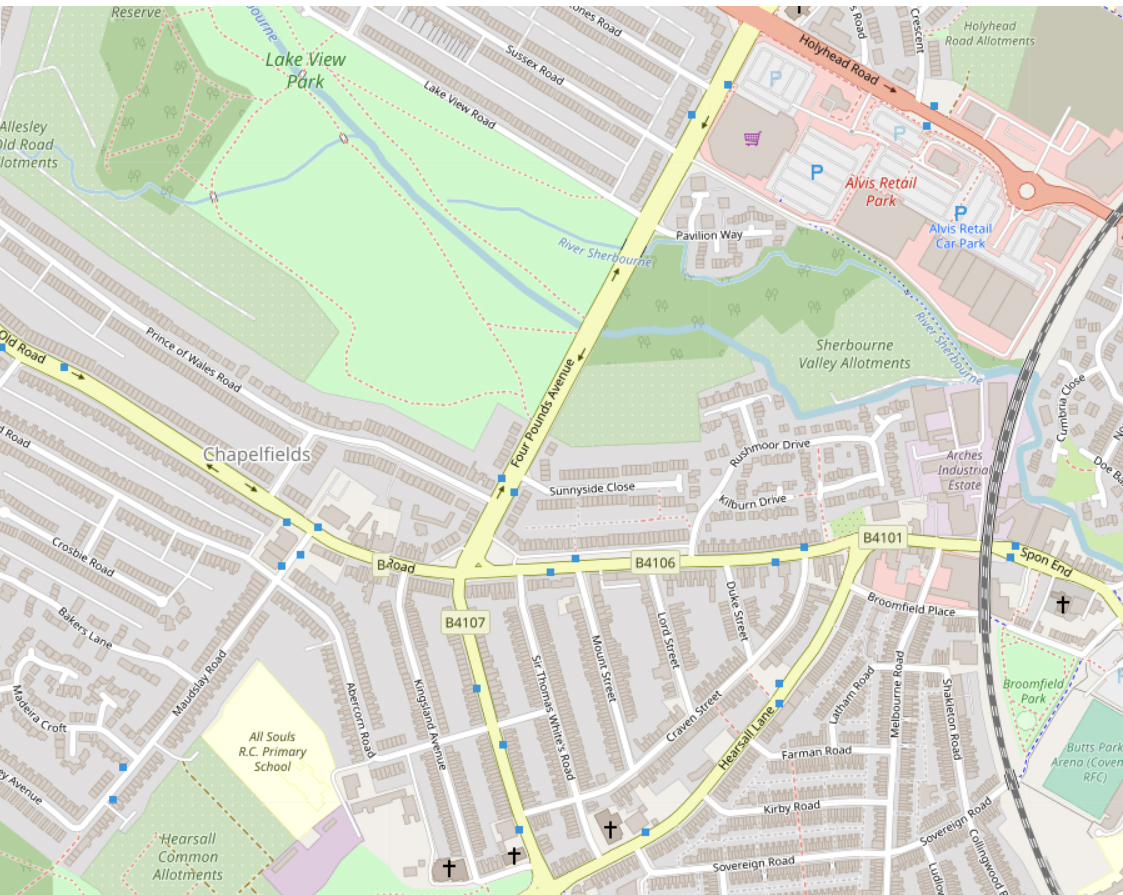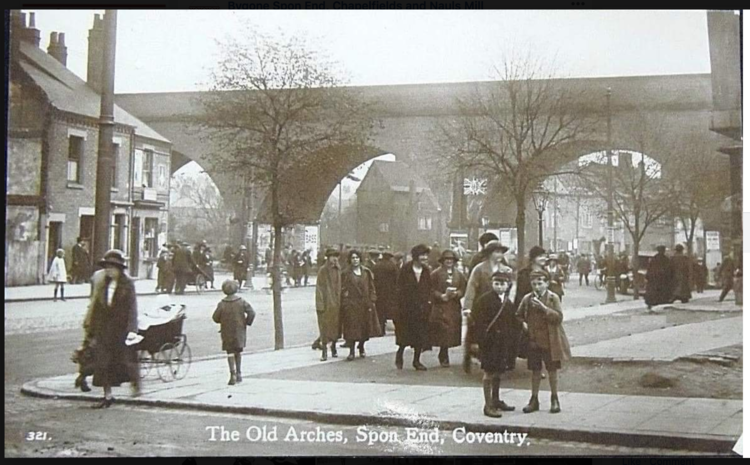
Today we have the sixth episode of Peter Walter’s series of lockdown walks “being a compendium of idle facts, hidden places and meaningless historiana gathered on walks within easy striding distance of the writer’s abode – and beyond”.
A Victorian mayor of Coventry filched the last fragments of the city’s medieval leper hospital and used them to create ornamental features in his garden, not the first nor the last time such municipal larceny has been somehow sanctioned in this town.
The twelfth century hospital and its chapel may live on in the district name of Chapelfields, but we don’t know exactly where it stood. Somewhere close to the junction of Hearsall Lane and the old road to Allesley is the best guess. Thanks Mr Mayor!
From that junction, the arches of the 1849 railway viaduct form a looming gateway into Spon End. Built in sandstone, most of them fell down in a January storm not ten years later and it’s reassuring to see that the tough engineering blue brick that replaced the original masonry has lasted somewhat longer.

In the shadow of the viaduct, on what was then fields, Coventry Chain, one of the first of the new industrial giants to build big in Coventry, put up their factory in 1907. The company’s long gone now, of course, the most telling reminder of it, perhaps, the drinking fountain memorial to the 47 men it lost in the Great War that stands in front of the old company offices. And even the plaque on that had to be rescued from a market stall in Lancashire some years back.
Spon End corn mill was demolished to build the Chain and traces of it are hard to find among the brambles and the buddleia that dominate the tangled undergrowth at the back of the site. Only the River Sherbourne, ambling through in its almost apologetic way, gives an indication of where the mill might have been. That’s the weird thing about the Sherbourne. It’s such a tiddler these days, yet in times past plenty of mills used its power as it flowed through the city.
A footpath leads over a bridge and skirts the Sherbourne Valley allotments, an impressive testament to grow-your-own that must be one of the biggest allotment sites in the city. The path emerges on Four Pounds Avenue, once little more than a farm track and in the 1960s the focus of a wild plan to create an urban motorway that would have cut right through to Hearsall Common. Thankfully, common sense intervened just in time and it never got off the drawing board.
In that sense, a bit like the lake in Lake View Park. Lovely view for sure, but the lake never happened, although very recently a fenced-in pond has been established right in the middle of the park. It’s a start anyway.
From there the park rises to meet the road over a mound created, apparently, by 20,000 tons of city centre rubble from the Coventry Blitz. It seems altogether appropriate for a landscape so full of lost features.
